San Giovanni in Venere
After swimming, seafood and too much sun in San Vito, we are in need of repose and sustenance for the soul. We head for San Giovanni in Venere.
On our short drive southwards down the Trabocchi Coast we catch glimpses of the bike path just below us, and beyond, the dazzling blue Adriatic. But just prior to the turnoff to the abbey before Fossacesia, the road dips and we pass wooded land where the forest has burned on both sides of the road. There is nothing left but charred tree stumps and blackened earth. An acrid smell still hangs in the air. Such sights are sadly not uncommon in summer but they never fail to give a kick to the stomach. Thankfully this time only a small area is affected and the vegetation is soon lush again.
An oasis
Our road leaves the coast and winds upwards past fields of olive trees towards the abbey. From the carpark there is a further short climb that in the intense heat tests our stamina. We are not too tired, though, to take in the wonderful view of the coast from the top of the hill.
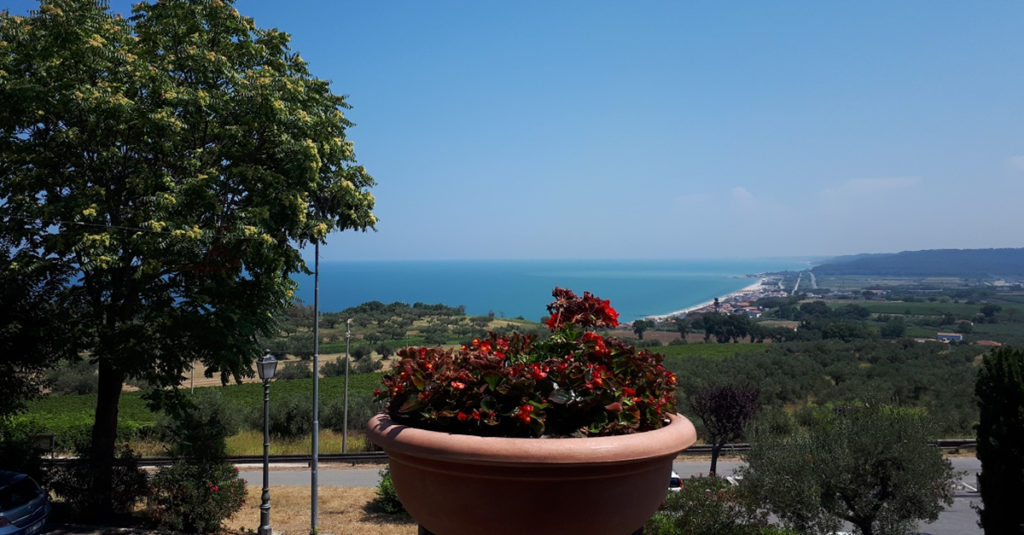
But before we do anything else we head for the bar/restaurant at the top which, wonder of wonders, has a large space out front with tables and chairs shaded by pine trees. A true oasis. From here we can relax and cool down and enjoy an unobstructed view of the abbey.
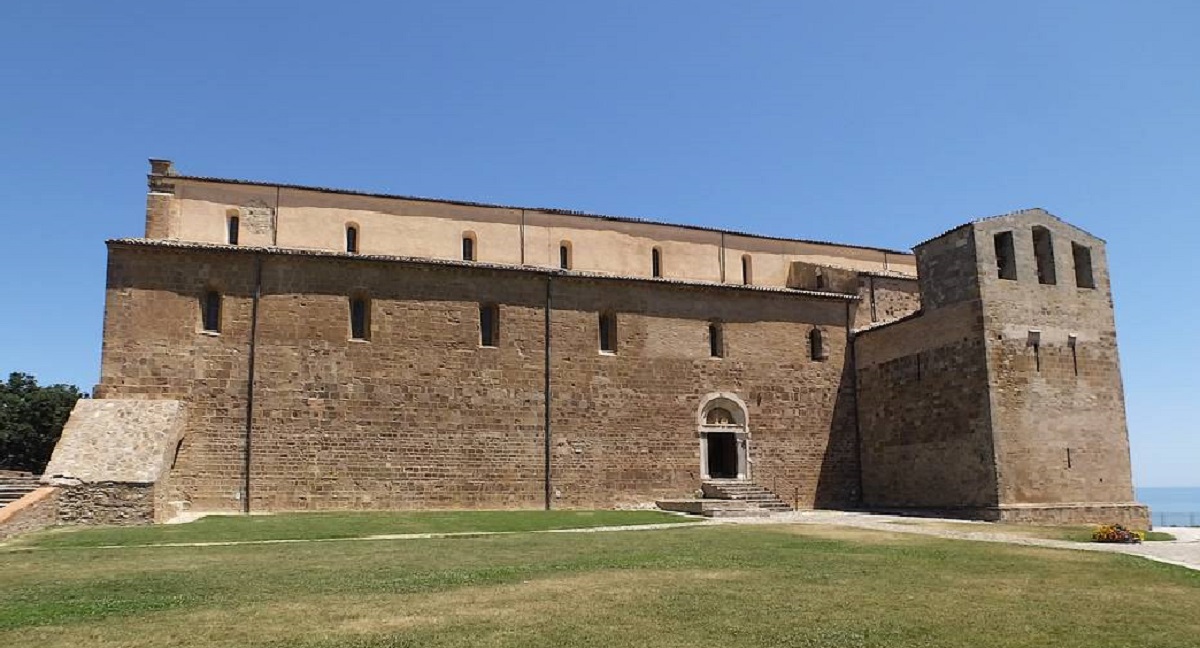
If I were planning my wedding, San Giovanni in Venere would top my list of possible venues. The building is plain but majestic, its setting too beautiful for words. And then, its name honours Venus, goddess of love.
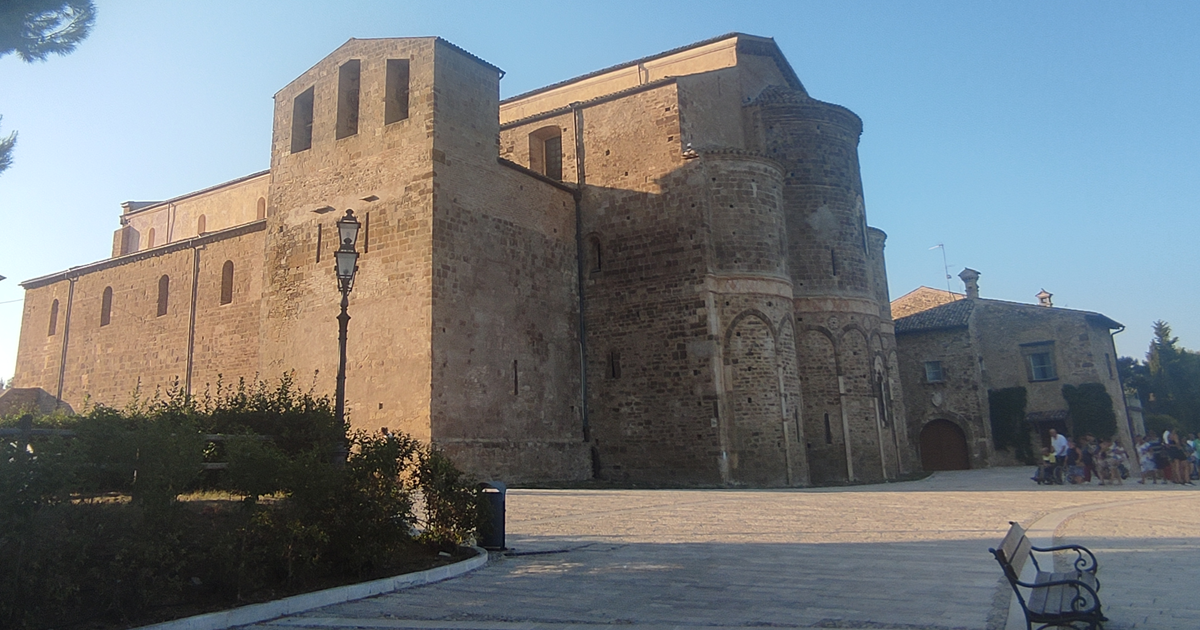
As we approach the side door of the basilica, we see that someone has had the same idea. The wedding planners are here, preparing for a ceremony later in the evening. The basilica, normally so bare and solemn, with its stately, soaring pillars, is being dressed up.
Origins
The double name, San Giovanni in Venere, both masculine and feminine, both Christian and pagan, is intriguing, but there is a simple explanation. The current imposing basilica and monastery go back to the thirteenth century but the building began as a small ninth century oratory dedicated to St. John the Baptist, which in turn was built over a temple to Venus from about 80 BC.
In its heyday, the adjacent monastery housed 80-120 Benedictine monks, and its many rooms included a library and an archive, whose texts are now in Rome, as well as a bakery and stables.
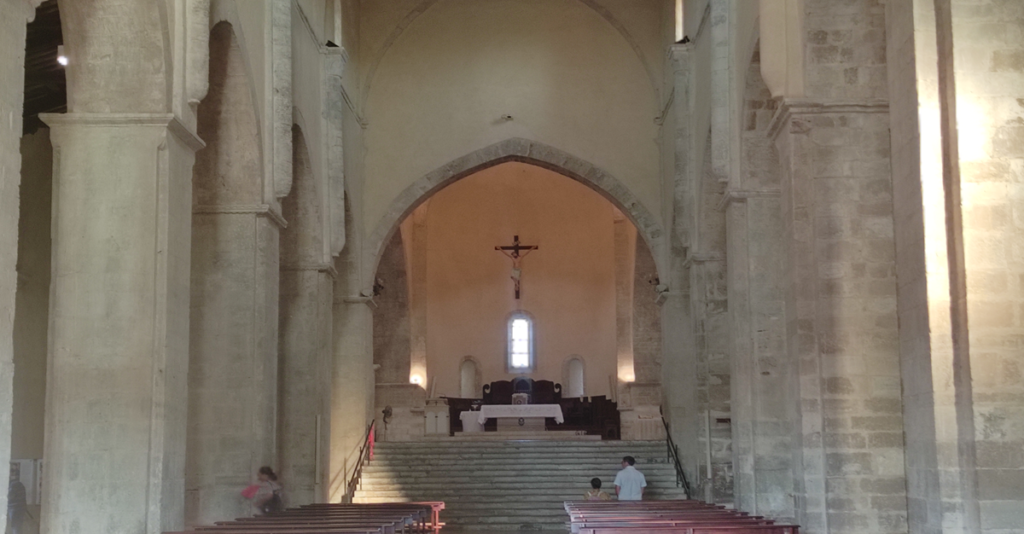
We sit for a while in the radiant, golden light that fills the basilica on this summer afternoon. Then we head to the cool, verdant cloister and its covered walkway all around, with the stations of the cross.
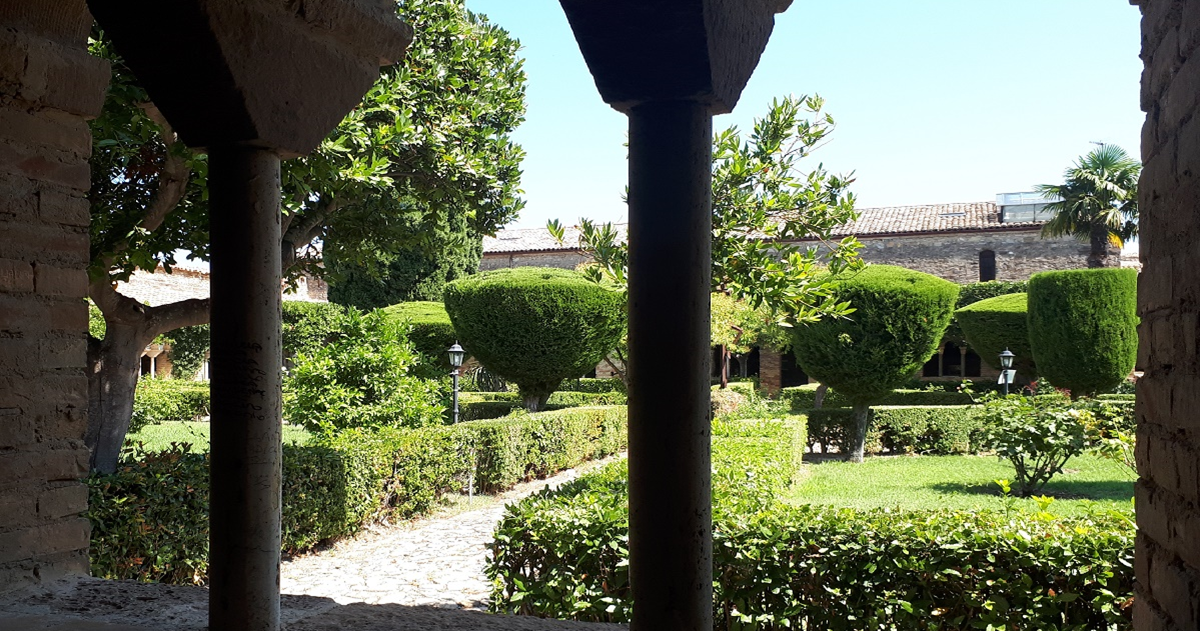
The Moon Gate
We emerge from the church by the Portale della Luna, the Moon Gate, so-called because during the summer solstice and just a few days before the feast day of St. John the Baptist the beams of the setting sun cross the threshold and set the aisle on fire, all the way up to the altar.
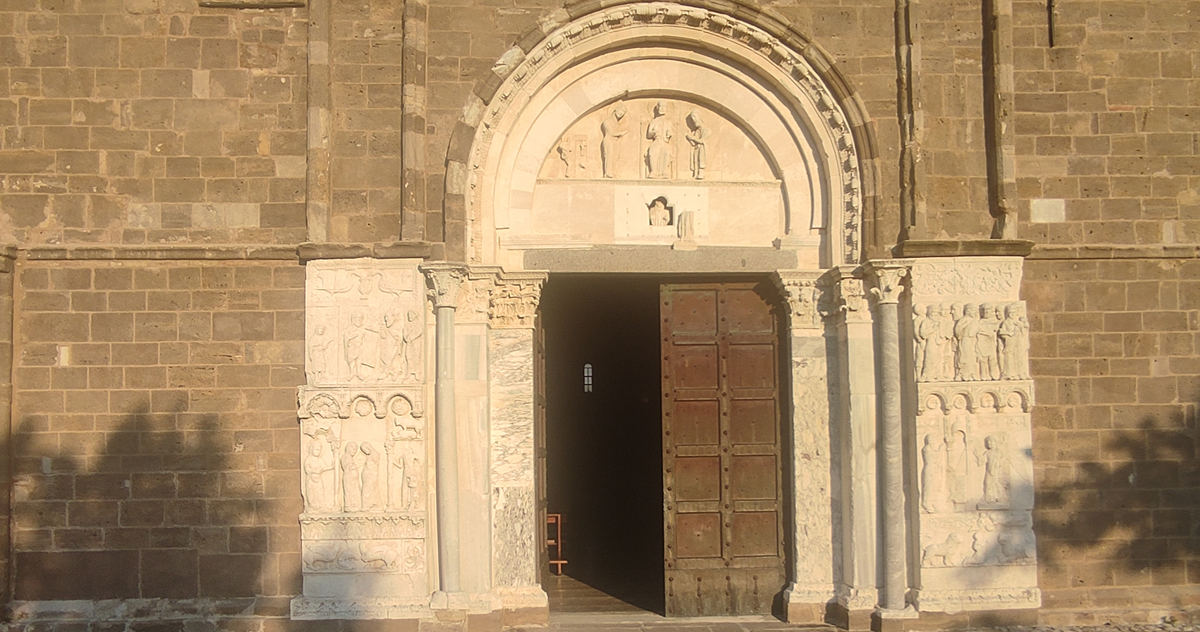
The exquisite sculptures framing the door have recently been restored. Most depict scenes from the life of John the Baptist and I particularly love the one showing the meeting between the Virgin Mary and her cousin Elizabeth. Although the features of the pregnant women are a little blunted, the gentle swell of their bellies is clear and their pose is infinitely tender.
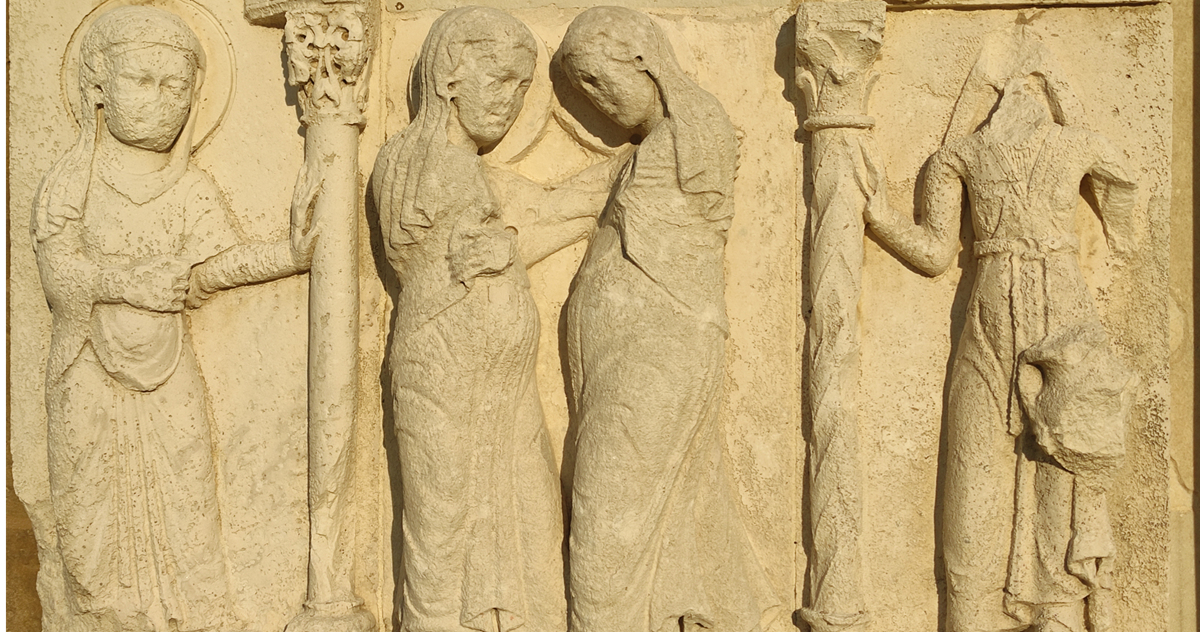
Our visit is not over yet, for behind the abbey, on its north east side, is a bellosguardo, reached by an easy walk in the shade of pine trees. The day is beginning to cool, the shadows starting to lengthen and we’re in a contemplative mood as we gaze yet again at the Adriatic and the trabocchi below.
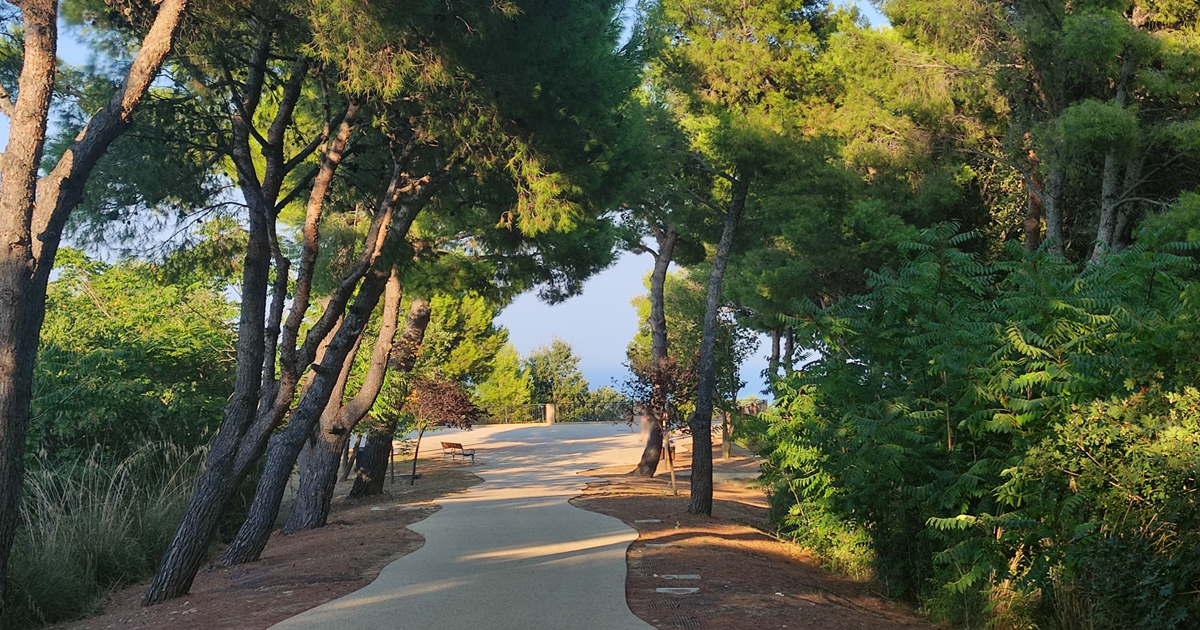
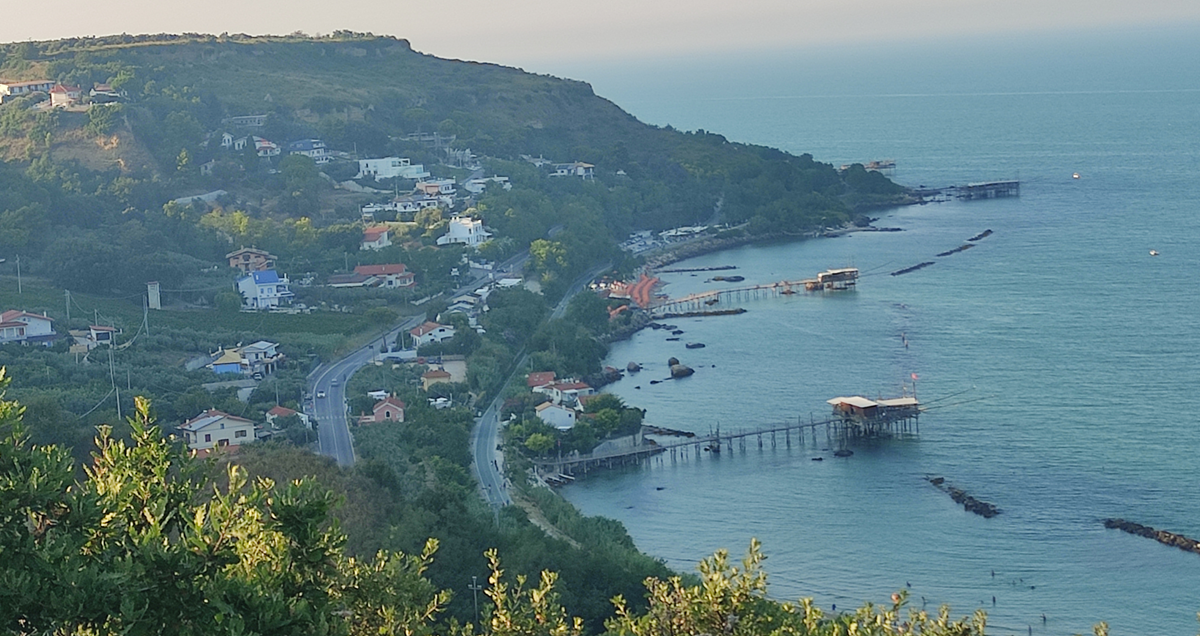
The view accompanies us as we circle back to the Abbey. From here we can see all the way down the coast to the southernmost tip of Abruzzo.
Something, though, is missing in the immediate foreground, a metre or two below where we are standing. Until a few years ago, there stood the oldest olive tree in Abruzzo. It died a few years ago, in spite of desperate attempts to save it. It was said to be 1700 years old.
All you need to know
The Abbey is in Fossacesia and can be reached by the SS16 from the north, San Vito, or from Fossacesia.
By train to Fossacesia/Torino di Sangro, and then 1.5km on foot, or a 4-minute bus ride from Piazza Fontini (buses are about 3 hours apart and there is no Sunday service).
Entrance to the Abbey is free of charge, although restrictions may be in place for ceremonies or on feast days.


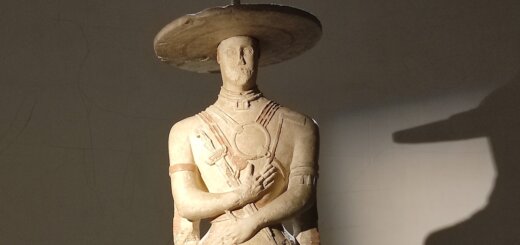

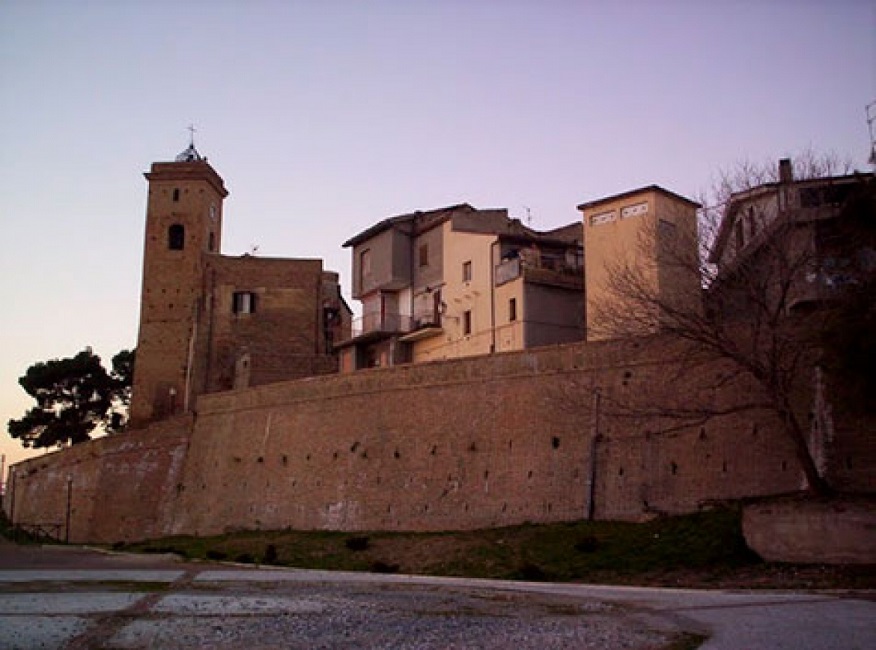
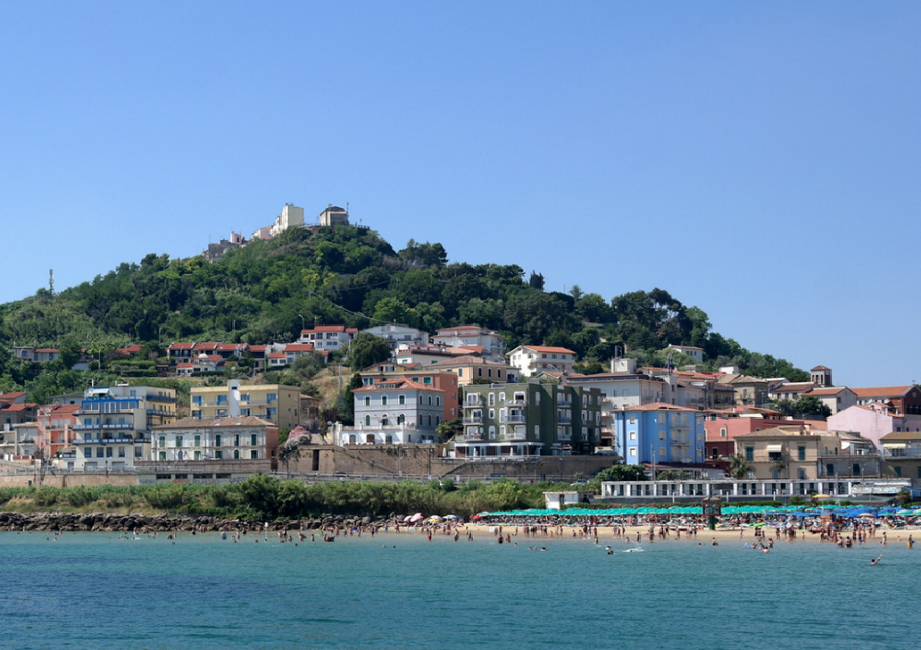
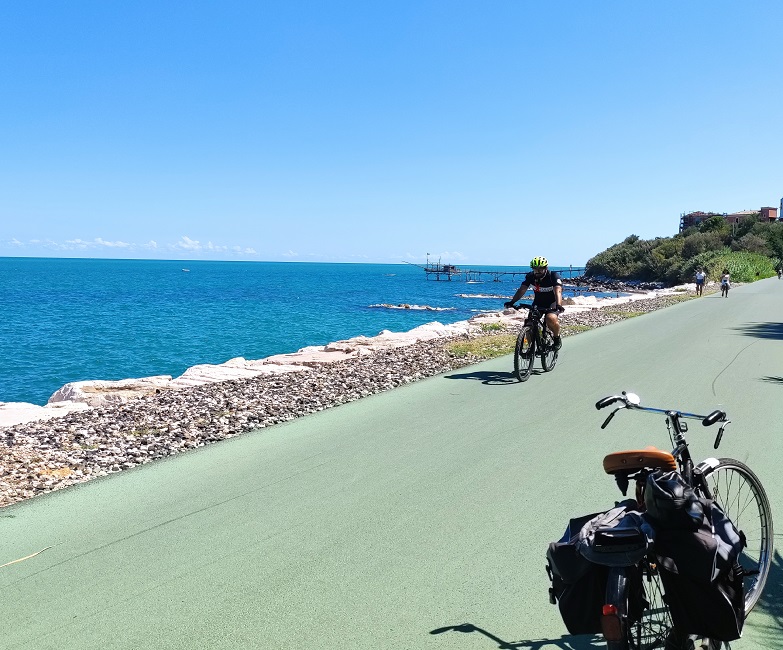
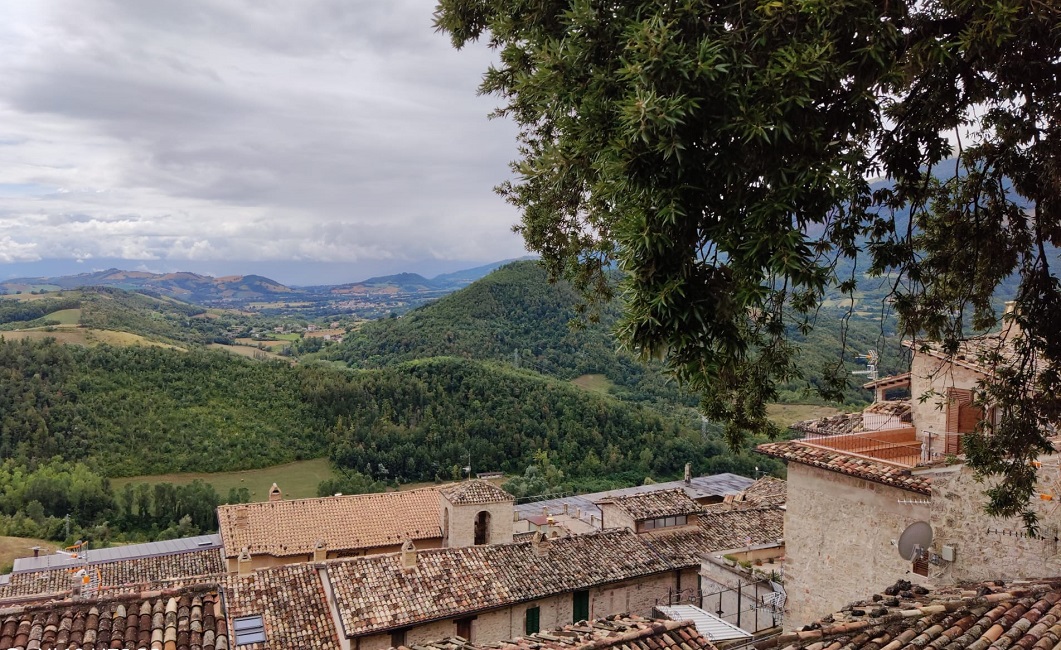
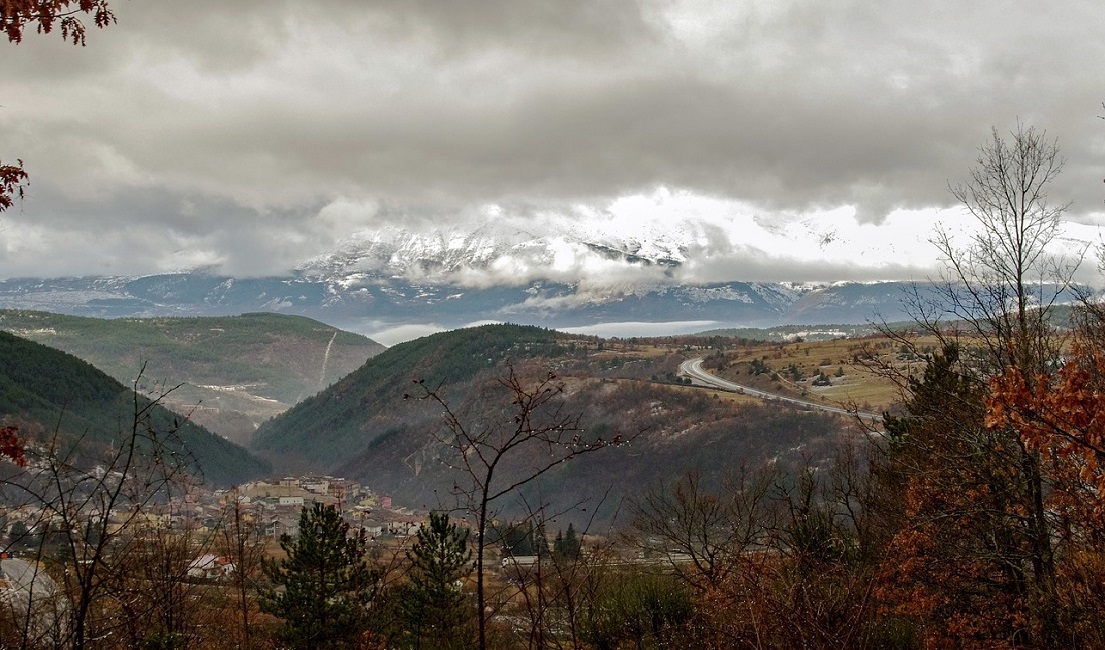
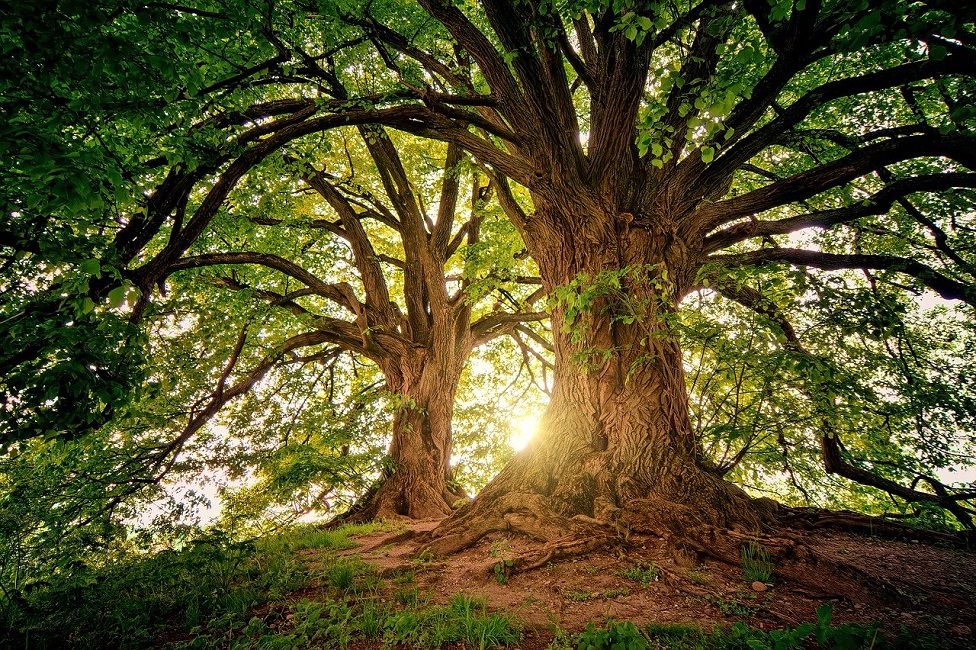
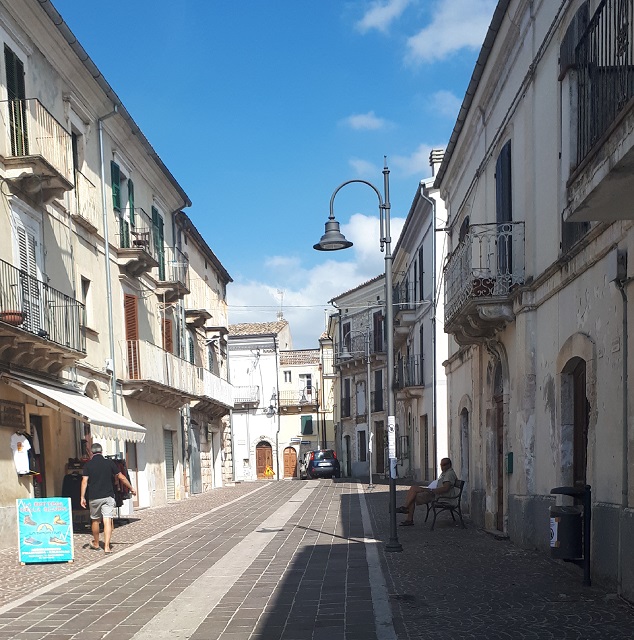
2 Responses
[…] San Giovanni in Venere […]
[…] San Giovanni in Venere […]